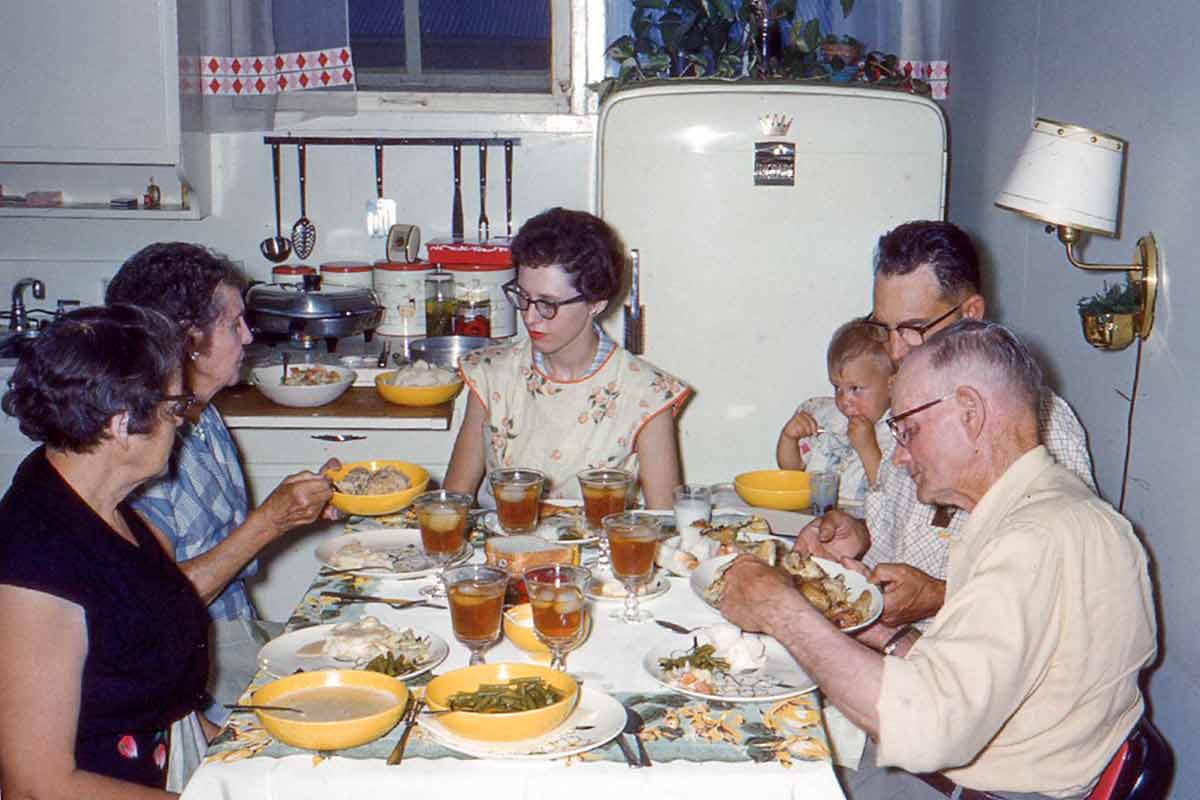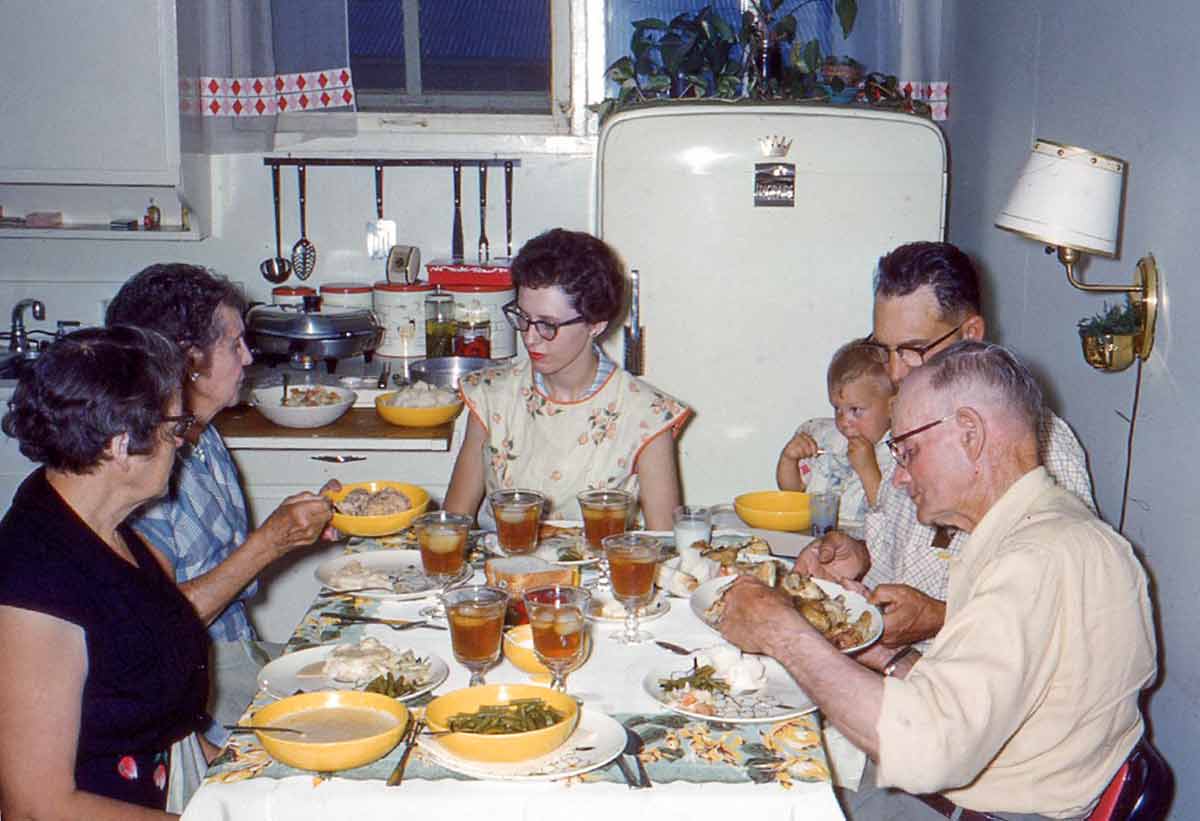

Right after my grandfather finished grace, the air would explode with their babble—Hey, you, young man! How about you, little lady!—trying to coax you to step up and try their kale soup, sausage stuffing, or meringue cookies. Sides were heavily drawn along immediate family lines, until that first brave (read: foolish) cousin dared dip his fork into an aunt’s paprika-and-chouriço-roasted potatoes, and all hell broke lose. Matrilineal allegiances would drop like canaries in a mineshaft and the annual holiday season had begun.
I always tried to stay true to my mother and her cooking for several reasons. 1.) She was a damn good cook; 2.) I worshipped her; and, perhaps most important, 3.) she was one hell of a force to be reckoned with when you displeased her. But on God’s sanctioned Holiest of Holy Food Days, according to a mash-up of catechism and playground philosophy, I betrayed her. Yes, her capons were impossibly juicy with taunt mahogany-burnished skin George Hamilton would envy. (Poppa Leite doesn’t like turkey, so it was emasculated roosters for us.) But she tripped up in the stuffing department—actually, I should say, dressing department because no one in my family ever stuffed a bird.
☞ MAKE THE RECIPE: DAVID’S PORTUGUESE TURKEY AND TWO STUFFINGS
Avó Costa, my maternal grandmother, and Dina short for madrinha (which is “godmother” in Portuguese), were the two reigning monarchs when it came to stuffing. My grandmother’s stuffing was bread-based and had all kinds of love in it. To wit: Day-old Vienna bread, chouriço (as you should know by now, the incomparable sausage of Portugal, whose aroma my grandmother wore like Chanel No. 5), onion, garlic, massa de pimentão (a red-pepper paste spiky with heat), wine, tomato paste, herbs, and (her favorite) white pepper.
And the Portuguese voodoo that only she pulled off? Despite all that soaked bread, what should have clunked onto the table like a medicine ball was airy instead–like mashed potatoes right after you’ve whipped them into a cloud of fluff. It was a feat no one else could master. But then again, no one else had the upper-arm strength of that woman.
The other stuffing that graced the table, the one that was secretly my favorite, was what Dina relished calling “French stuffing,” as she liked to downplay the 50 percent of her DNA that was Portuguese. Now stay with me here, because its provenance is quite confusing. There is indeed a dish called French stuffing—made with ground pork, potato, cinnamon, and nutmeg—that is mistakenly referred to by some as gouton, gorton, or corton, depending on where on New England’s South Coast you come from. No matter how you pronounce it, it’s actually a bastardization of cretons, a Canadian pork pâté that’s distinctly different from French stuffing. But for many, including my godmother, it was a short leap from Canadian to French Canadian to French. Hence it all was French stuffing. And to her anything French, even by way of Montréal, trumped Portuguese.
But it isn’t French at all—well, at least not exclusively French. See, when I lived in Portugal a few years ago, I uncovered a touching tidbit of information, a detail that gave meaning to our table and a sense of unity to our family. I discovered, while flipping through an antiquated cookbook in a dusty store in Lisbon, that the Portuguese make several types of stuffings to go with their turkey, none of which have anything to do with Thanksgiving, as they don’t celebrate the holiday. (Are you still with me?)
One dressing is almost a fraternal twin of my grandmother’s bread stuffing. But I found another stuffing, one that is a kissing cousin to Dina’s version. So close are they that I guess you could call them French-kissing cousins. (She’d love that.) This old stuffing is plump with potatoes, pork sausage, onions, garlic, milk, a sprinkling of herbs, and—differing from Dina’s dish—the chopped and sautéed liver of the turkey. She may have called hers French stuffing, and it may have been handed down by her French-Canadian mother, but I firmly believe that her Portuguese father had a gentle influence, too.
By the time I discovered this, Dina was long gone. How I wish I could have sat there, thumping the dining room table with my fist while she leaned back implacable, pulling on a Lucky Strike cigarette, her lipstick leaving Lucille Ball-red half moons on the end. “Davis,” as she liked to call me, “Davis, you can say my French stuffing is Portuguese until the cows come home, but it just ain’t true.” And while I know that they’re different but strikingly similar, I would tease, cajole, and argue because, in our family, that was the price of admission to our carnival.













Thank you for such a wonderful story.
Thanks, Patti!